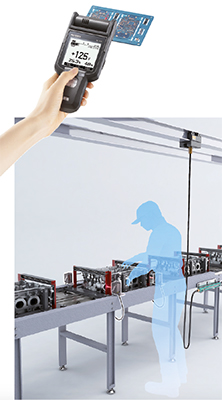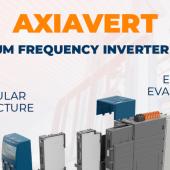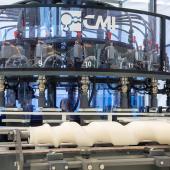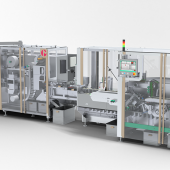High-precision electrostatic sensor
Simultaneously measuring the electrostatic charge and humidity, any issues related to the electrostatic charge of a material can be more easily identified, along with the appropriate measures to be taken.
For these needs Keyence offers two models of sensors with interesting characteristics, one portable and one for operating inline.
 The portable model
The portable model
The portable sensor SK-H050 is ideal for custom measurements. Its head is mounted on a movable structure that rotates 180 degrees and that, in addition to operating in confined spaces, provides better resistance to impact (the impact from a fall does not directly affect the sensor).
The body of the SK-H050 is distinguished by its ergonomic shape, allowing an easy grip. The dual laser pointer facilitates the identification of the optimal distance, required when high accuracy is required, while the large liquid crystal high visibility display enables easy on site reading of measurement results.
This sensor is also able to detect with ease the elimination rate of the electrostatic charge and the ion balance: values that indicate the elimination capacity of the electrostatic charge of a deionizer. Moreover, its internal memory can store up to 100 sets of data which can then be transferred to a computer via USB and save as CSV data.
The inline model
The sensor SK-050/1000 is ideal for continuous measurements in line. The extremely small size of the head allows for installation almost anywhere, even in limited space within a facility. The large LED clearly indicates the detection status even when the head and the amplifier are separated. UP to eight amps can be connected along the same line, depending on the combination of the main unit and expansion unit; the electrical connections are, thus, reduced, even in applications that require measurements at multiple points.
Reliability is one of the main characteristics of this sensor that in fact enables measuring of the exact distance between the head and the target piece. Measurement errors can be corrected by inserting installation distance measurement in the amplifier. The standard specifications include a 3 digital output evaluation system to and a voltage/analogical current outlet.
Thanks to a communication unit data can be simultaneously transmitted from up to 8 connected units. The ability to read the data and rewrite the settings from PC and PLC helps to significantly reduce the hours of work required for the configuration and operation of the sensor.

















